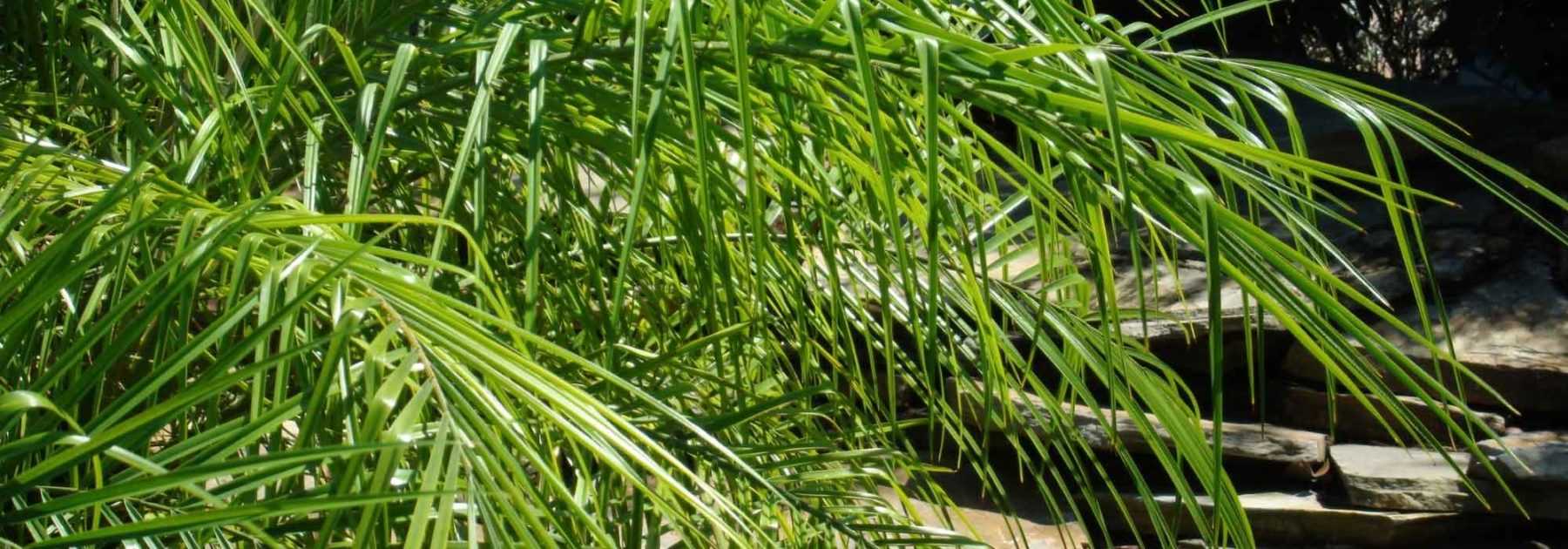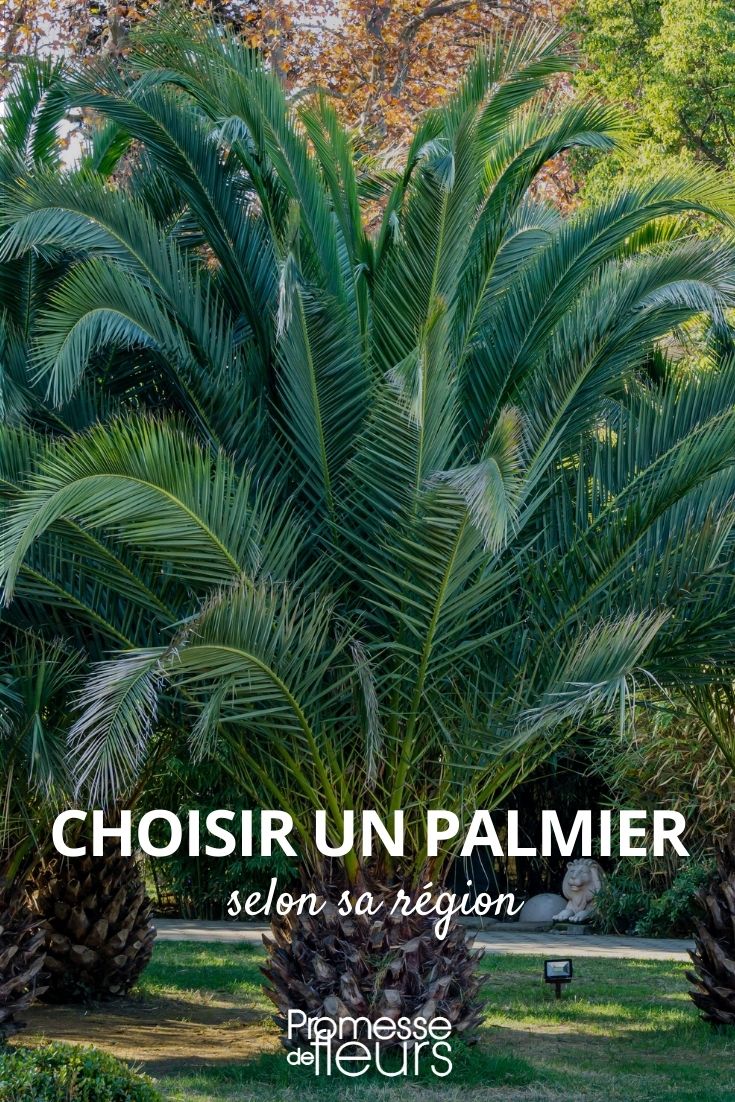
Palm Trees by Climate
Suitable varieties to plant in the garden
Contents
The vast genus of palm trees, the princes of plants that spend their lives on holiday! Nearly 3,000 species form the backdrop, with around fifty used in our landscapes. The gentle craze for palm trees took off in the 19th century, giving its distinctive charm to the French Riviera, among other places. The palm tree, a symbol of exoticism like no other, has now colonised other regions: these plants are not demanding, require no special care, and instantly set the scene in a garden, patio, or terrace. The only limiting factor for planting them is, of course, their cold hardiness. This is the factor that will guide your choice, depending on the region where you wish to plant it. We offer a selection of palm trees suited to different types of climates: you’re sure to find the one that will work wonders in your home!

Palm trees can be adapted to different types of climate
Palm Trees for the Mediterranean Coastline
Only privileged gardens can boast of hosting species adapted to the Mediterranean climate. This region belongs to the USDA hardiness zone 10, with a very mild climate and rare sub-zero temperatures. You can afford to choose from the long list of palm trees available, including the most tender ones. Among the tallest, note the Fan Palm Sabal mauritiiformis, with its very slender silhouette and rapid growth, capable of reaching an impressive height of 15 to 20m. The Mexican Palm Brahea calcarea is also an excellent choice, growing up to 12m tall and tolerating summer drought well. Also native to Mexico: the Yucatan Fan Palm Sabal yapa has a more modest growth, making it suitable for smaller spaces. Other palm trees adapted to colder conditions will also thrive in the Mediterranean region, provided they are given optimal soil and exposure conditions. Not all species and varieties are necessarily equipped to withstand full sun and dry soils, two important factors to consider in your choice!

Sabal mauritiiformis
Read also
Palms: Planting, Growing and CaringPalm Trees for the Atlantic Coast
This favoured coastal fringe benefits from the influences of the Gulf Stream and the Atlantic Ocean, corresponding to the USDA hardiness zone 9. The oceanic climate experiences mild seasons: winters are mild and rather humid, while summers are not extremely hot. The annual temperature range is therefore quite limited, and palm trees also become part of the landscape. For seaside gardens, it is also important to consider their ability to withstand salt spray, such as the dwarf palm Chamaerops humilis with its beautiful fan-like leaves, or the classic Canary Island Date Palm Phoenix canariensis with its long, arching fronds. For its striking bluish hue, plant the Brahea armata or Mexican Blue Palm, which is hardy, tolerates salt spray, poor and even sandy soils, and drought. For a shaded spot, the Bamboo Palm Rhapis excelsa will also add the exotic touch you desire, provided it is sheltered from wind and salt spray.

Chamaerops humilis, Phoenix canariensis and Brahea armata
Palm Trees Suitable for Northern and Semi-Continental Climates
The regions in the North and Centre of France experience a more contrasting climate where periods of frost are not particularly intense but frequent. In these latitudes, try the Wine Palm Butia capitata, hardy down to -12°C, which has moderate growth, making it ideal for small spaces and container cultivation, as well as Phoenix theophrasti, the most cold-resistant of the Phoenix palms, which can withstand short frosts down to -12°C when sheltered from cold winds and in well-drained soil. The dwarf palm Sabal etonia, with its attractive bushy habit and multiple fan-shaped fronds, will also add a stunning touch of exoticism, as it can tolerate temperatures as low as -15°C.

Butia capitata and Sabal etonia
Palm Trees Suitable for Continental Climates
The eastern regions experience a more distinctly contrasting climate, with hot summers and cold winters. The temperature range between extremes can sometimes exceed 25 to 30°C, so the few palm trees capable of acclimatising there must be extremely hardy and able to withstand high summer temperatures and harsh winter conditions. The champion of cold resistance is the Chinese Windmill Palm, or Trachycarpus fortunei, which can tolerate temperatures as low as -16°C to -18°C. Its growth is relatively slow, but it can reach over 8m in height: plant it in soil that is not too dry and sheltered from the wind for successful establishment. The Dwarf Chusan Palm, Trachycarpus wagnerianus, is also a stunning and highly ornamental palm, hardy down to -18°C, ready to adapt to any soil, and reaching a height of around 4m! Finally, the Needle Palm, Rhapidophyllum hystrix, is hardy down to -20°C: plant it in shade or partial shade, as it prefers fertile and consistently moist soils.

Trachycarpus fortunei, Trachycarpus wagnerianus and Rhapidophyllum hystrix
- Subscribe!
- Contents



































Comments